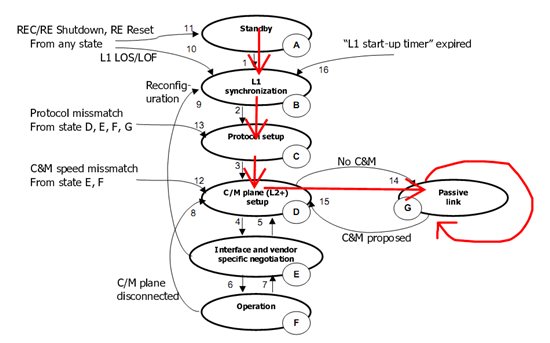Hi e2e.ti users,
I have a strong problem with CPRI interface berween 6474 DSP and FPGA.. Spartan 6 FPGA withCPRI IP Core V4.1 is used. 1X Link (614.4 Mbps) is used. FPGA is the CPRI Master (REC) and DSP is the Slave (RE).
I tested CSL_6474 AIF example codes on DSP. "aif_cpri_lbk_generic_4x_15bit_short_frame" project referenced and tested on loopback mode. Test passed in 4X mode. Than I configured the DSP to run in 1X rate on loopback mode, test passed again. Than I configured the FPGA to run in 1X rate and looped TX to RX. FPGA passed the test. Both DSP and FPGA work in 1X rate and passed the loppback test.
In the next step I take out both DSP and FPGA from loopback mode. DSP sending 0-1-2-3-4-5-6-7 continuous integer array to FPGA and FPGA sending 0-1-2-3-4-5-6-7continuous integer array to DSP. But I received all buffer "00" in FPGA and "FFFF" in DSP.
I didnot find any register on DSP to configure AIF interface as Master(REC) or Slave(RE) ?
Is there any one run CPRI interface beetween DSP and FPGA?
I have to solve this problem urgency,
Need your help,
Best Regards,
Ahmet


